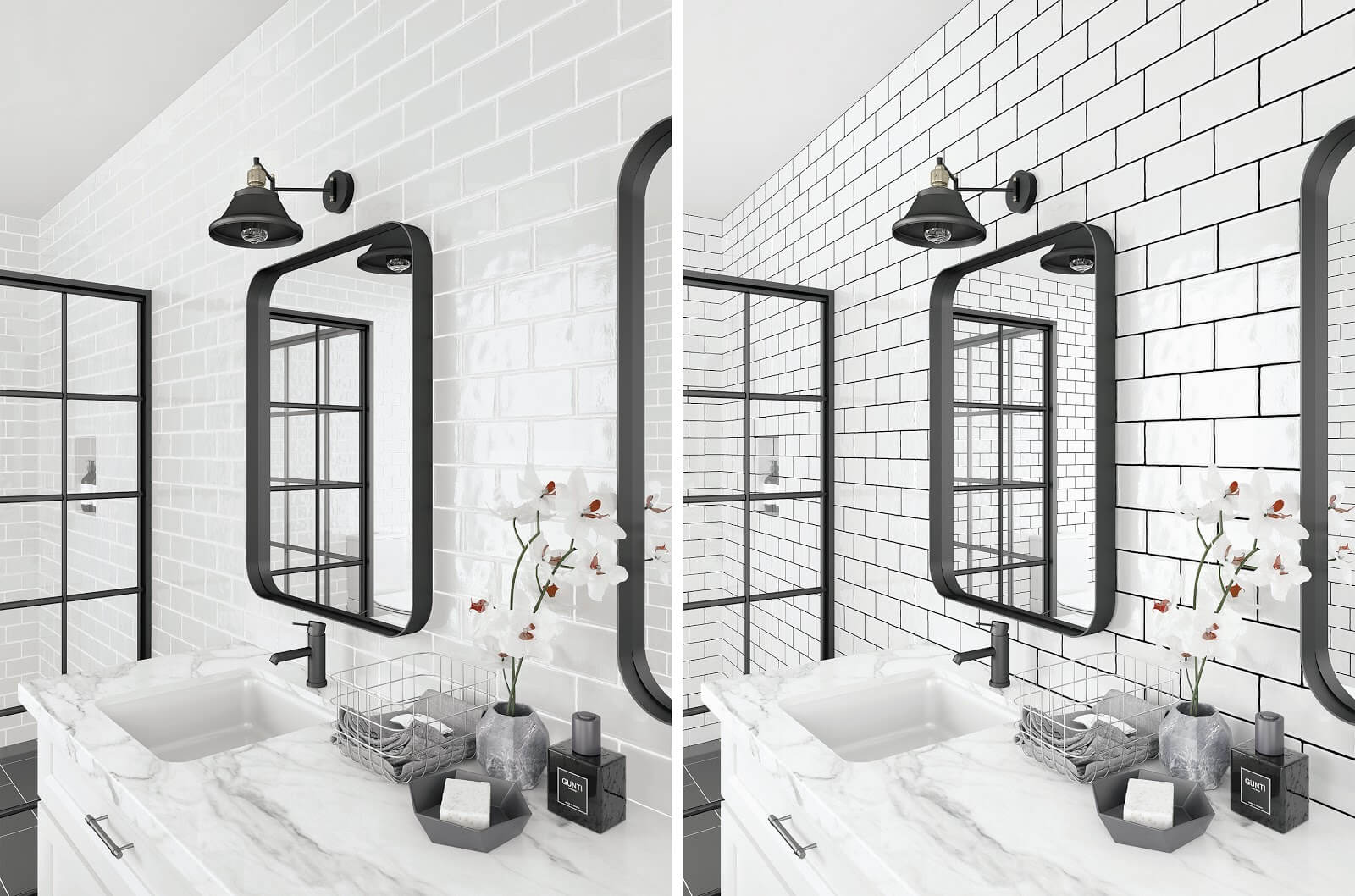Picking out a tile color, pattern, shape, and layout is a fun part of designing your tile application, but all too often we forget about an equally important design element: grout color.
Grout color can emphasize certain elements of your tile, fade into the background, or completely steal the show — either way, choosing the right grout color is essential to a successful tile design. Here are some considerations, ideas, and frequently asked questions to help you find the perfect grout color.
Grout Considerations
These factors can all affect the impact that your grout color makes on your tile design.
Application Size
How large of an area are you tiling? Grout colors that contrast with your tile color will create a more complex look, which may be overwhelming in a large space. Matching grout to the tile color, on the other hand, creates a more continuous surface visual and can help make a small space appear larger.
Tile Location
Your tile location can influence your grout decisions.
For instance, wall tile and backsplash tile may be in your direct line of site, making your grout color decision more immediately visible than it might be with some floor areas. As well, a bold grout color contrast in a large area can be overwhelming.
Design Complexity
While the size and location of your tile impacts the tile installation design, your grout color choice gives you the opportunity to influence your design complexity in any space.
Remember these rules of thumb:
- By matching grout and tile colors, you can create a minimalist look with the grout lines fading into the background.
- Using contrasting colors for your tile and grout make for a more dynamic design.
- For a look that splits the difference, pair your tile with a mid-toned neutral grout color, such as gray.
Patterns
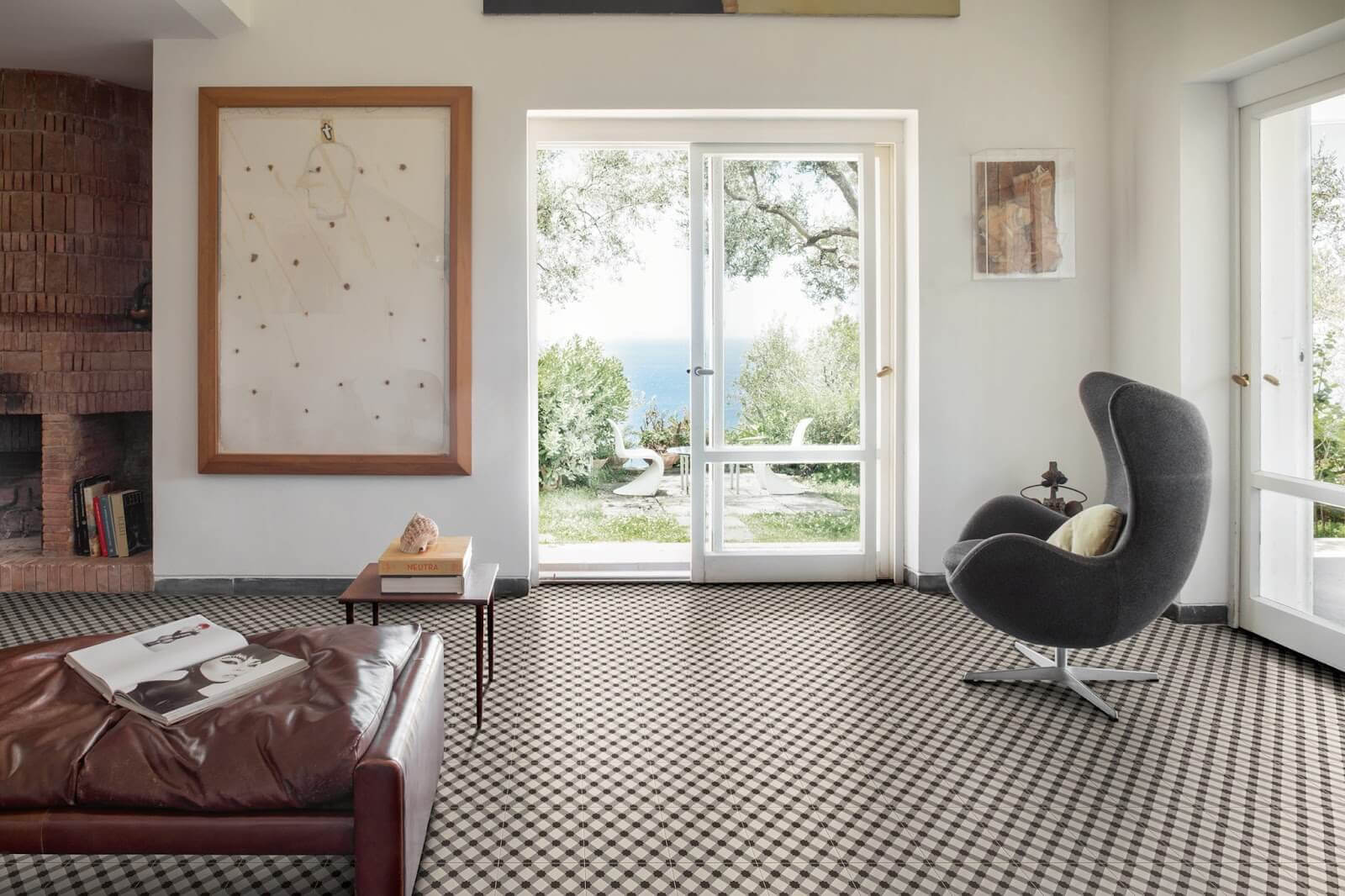
Tile applications present multiple options to play with patterns.
If your tile itself is patterned, you may want to use thinner grout lines (as allowed per manufacturer instructions) or use neutral-colored grout to let the tile pattern be the focus.
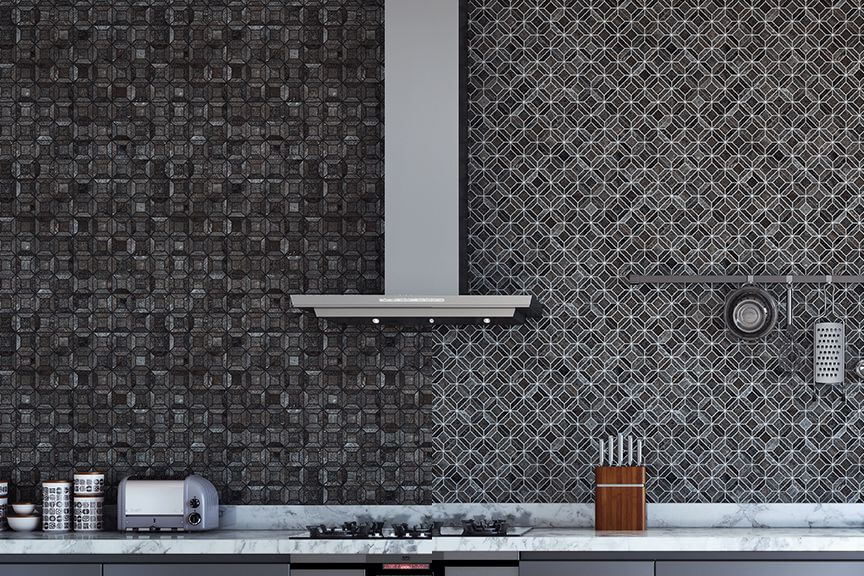
On the other hand, grout is a great way to draw attention to your tile layout or tile shape (see how the mosaic tile in the composite image above changes with a different grout color).
Surrounding Interior Decor
You obviously want your grout color to complement your tile color, but don’t overlook the rest of your interior decor.
Grout color may look less bold if it picks up the tones in the rest of the room. For example, grout with brown or red tints can coordinate well with nearby wood, brick, stone, and leather.
Before you settle on a specific grout color, ask your contractor or designer for grout swatches (yes, just like with paint colors) to compare to the other colors in your space.
Multicolored Tile
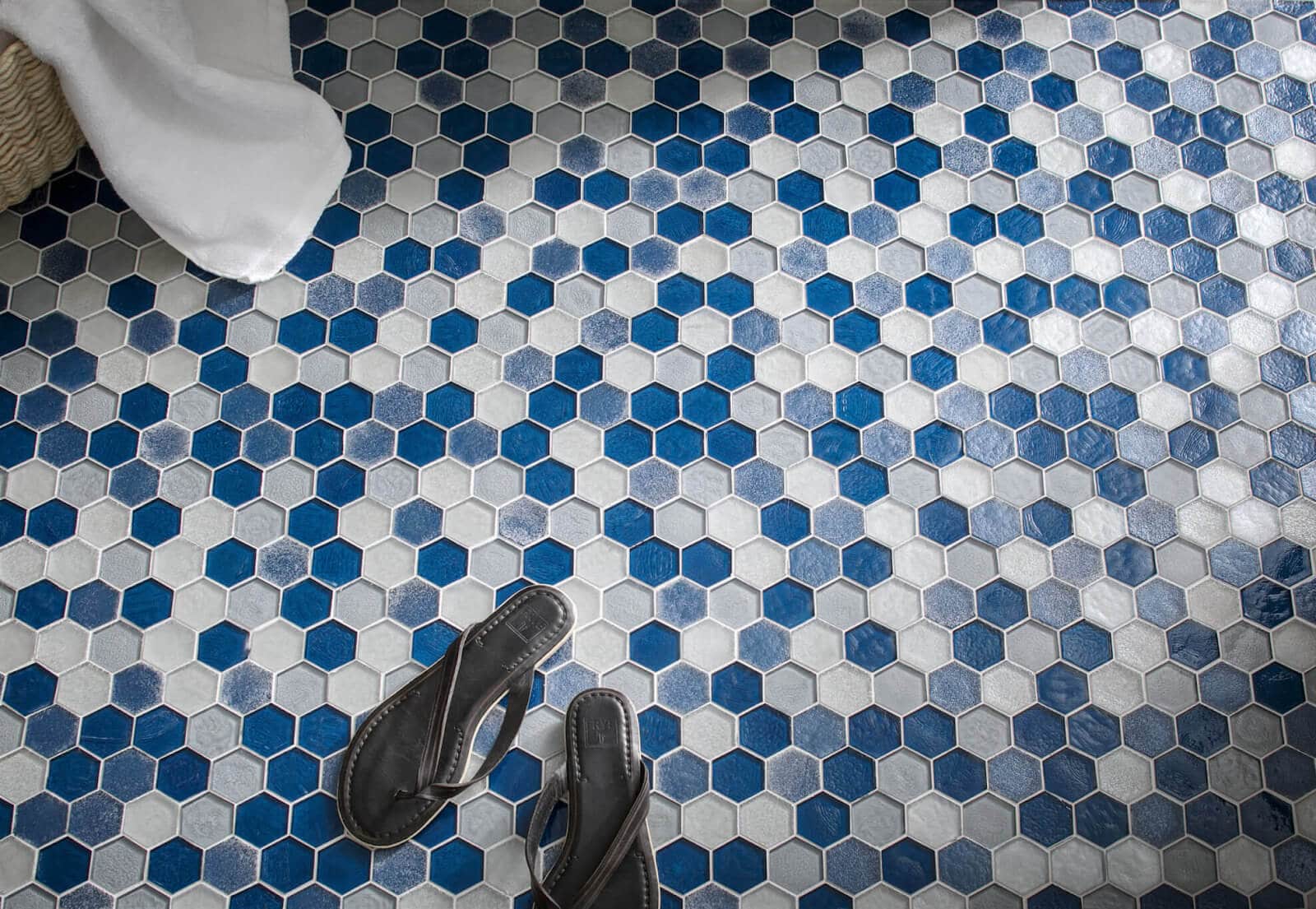
Multicolored tile may seem particularly tricky to choose a grout color for, but you actually have several appealing options:
- Match your grout with one of the colors in your application (try the most neutral color first) to ensure that the grout will coordinate well.
- Select a grout color light or dark enough that it will contrast with all the colors in your tile application. (This option works well if none of the tile colors are extreme darks or lights.)
- For patterned tile, choose a grout color that blends into the edges of the tile as much as possible so that it doesn’t interrupt the pattern.
- With veined stone-look tile, you can choose to match your grout color with the tile’s base color, for a more seamless look, or with the veining.
Tile Edges
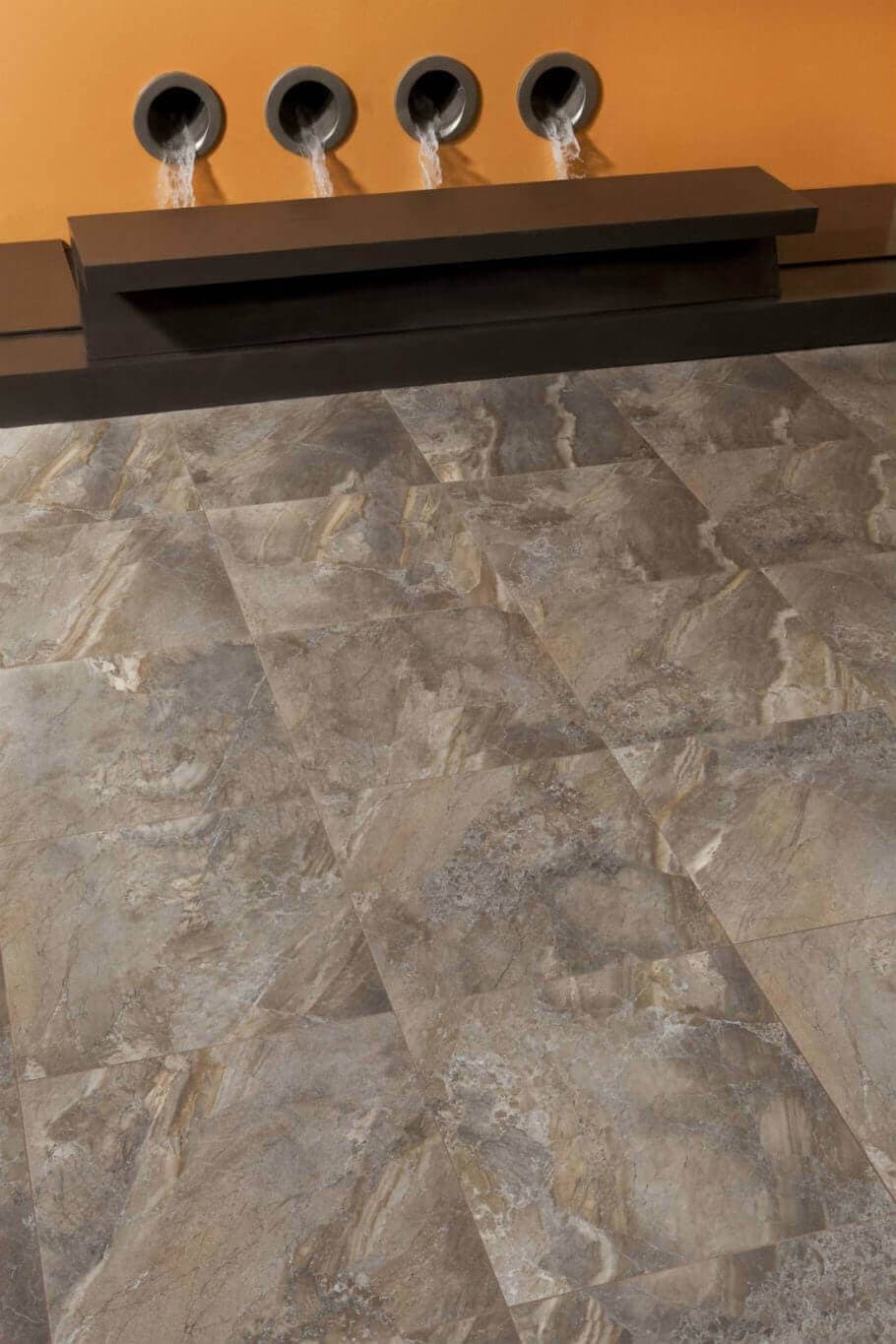
Rectification is a tile edge treatment that cuts tiles to a more exact size, resulting in crisp tile edges. Because rectified tiles are more of an exact dimension, they can often be placed closer together than non-rectified tiles and can have more narrow grout lines.
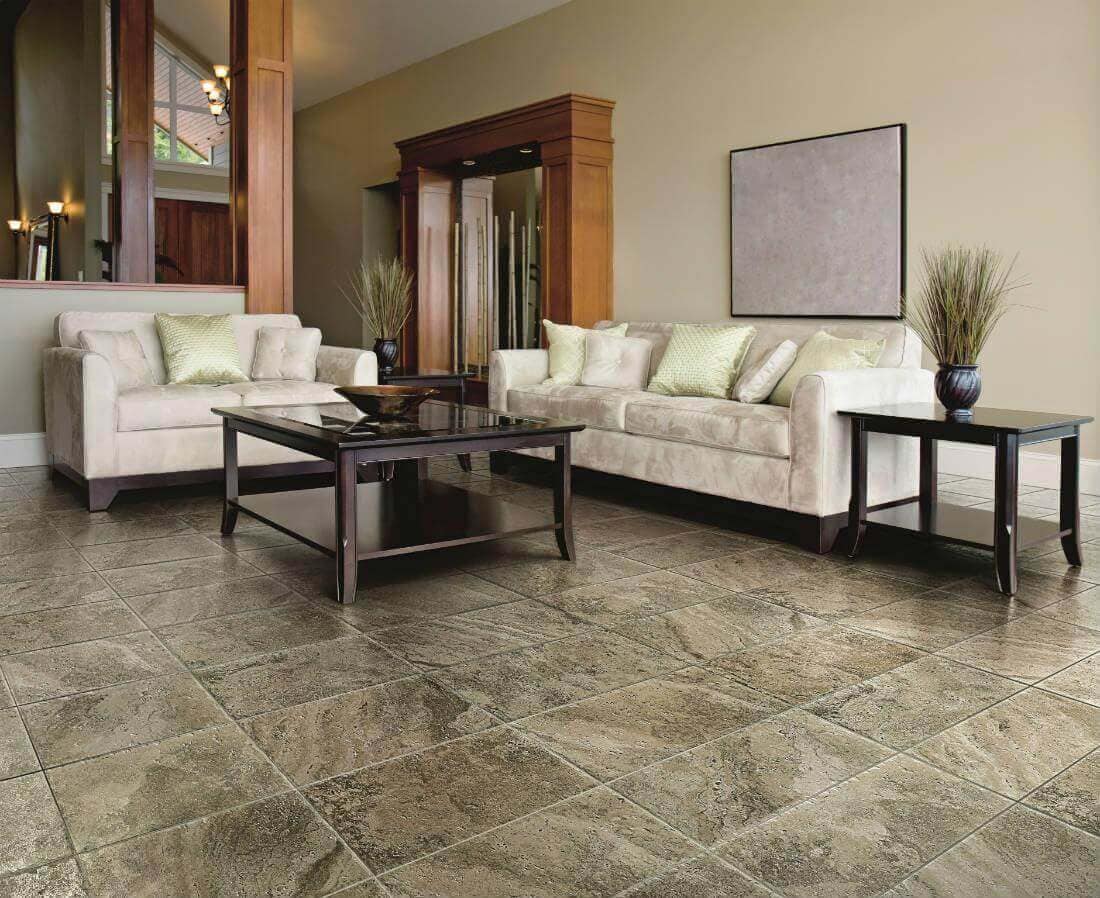
Nonrectified tiles typically have more variation in size, so wider grout joints may be used to provide a more uniform appearance.
Neither of these tile edge types is better than the other, so consider which look you want for your tile, the size you prefer for your grout lines, and what is recommended by the manufacturer. Whether you choose rectified or nonrectified tile edges, your choice of grout color can draw more or less attention to the grout lines.
Playful Grout Lines

In addition to the tile edges, you can play with the consistency of the grout lines. Curved tile shapes, especially, present the opportunity for unique grout lines that are thicker in some places than others.
Grout Joint Size
According to the Tile Council of North America (TCNA), there is no “standard” joint width for tile installations. Joint width can vary based on the manufacturer’s specifications and the effect you want to create.
Note that the size of the grout joint isn’t necessarily a question of aesthetics. Installation methods allow for an acceptable joint width range dependent on the tile application, type and size of tile, and type of grout being used. Your installer should refer to the manufacturer’s specifications for the tile and for the grout being used to determine the range appropriate for the look you want to achieve.
Joint size and grout color go hand in hand: While thin joints in a color that matches the tile may seem to disappear, thick joints in a contrasting color make a bold statement, and emphasizes the shape of the tile.
Tile Shape
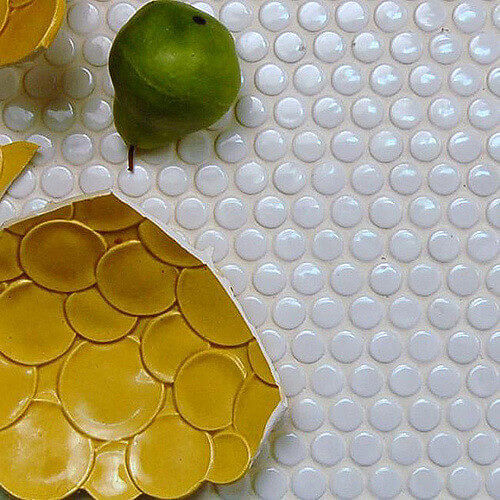
Tile shape may also affect grout size.
For example, circular tile such as penny round tile requires larger areas of grout, making the grout more noticeable than it would be with rectangular or square tile. If you want your tile and not your grout to be the main focus, closely matching your tile and grout colors is best.
Tile Finish
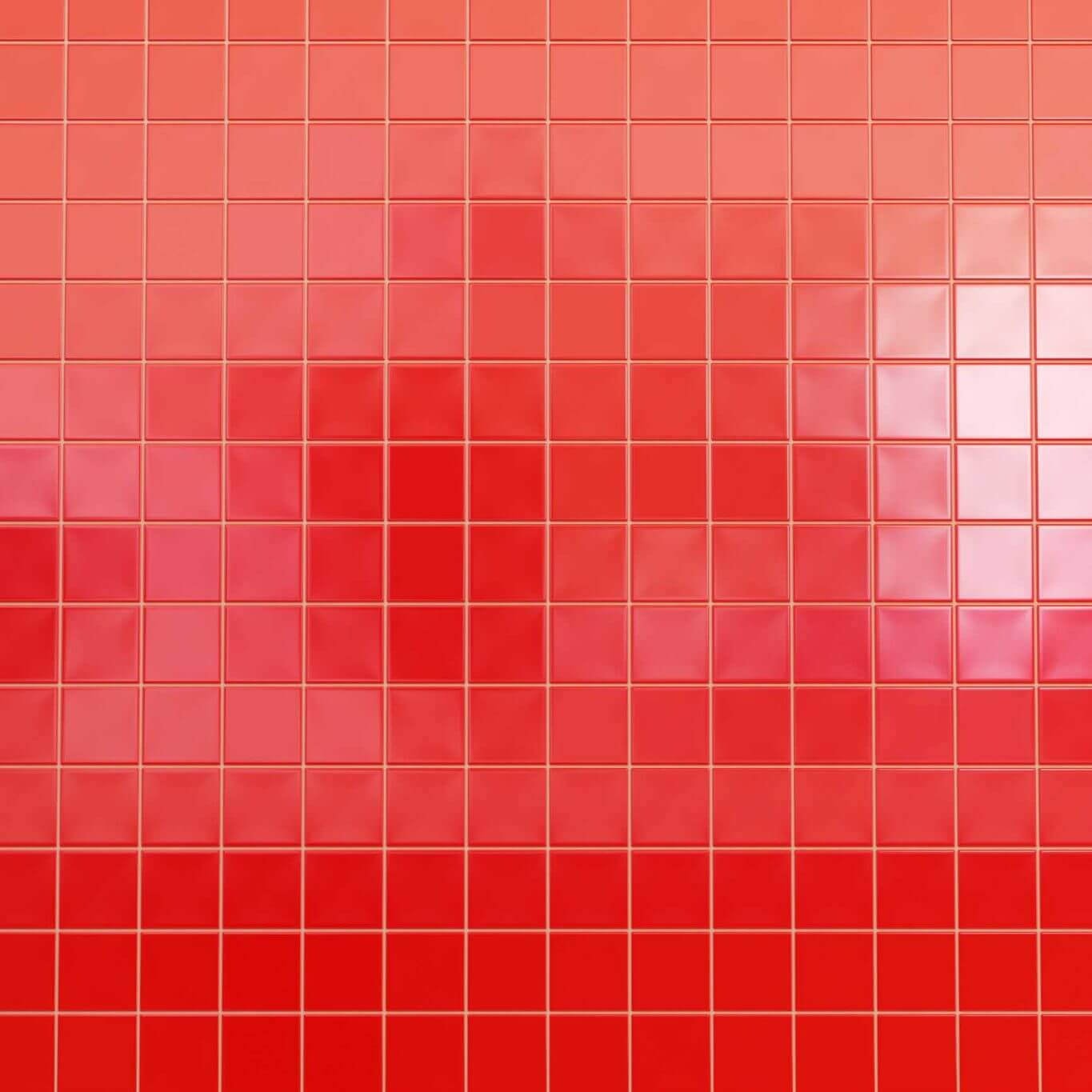
Glossy tile such as iridescent tile, high-sheen tile, and mirror tile reflect light, which can make it look lighter in your space than it does when you’re looking at a sample. Keep this in mind when choosing a grout color and consider shades in a lighter color than you might otherwise choose.
Different Tiles in One Space
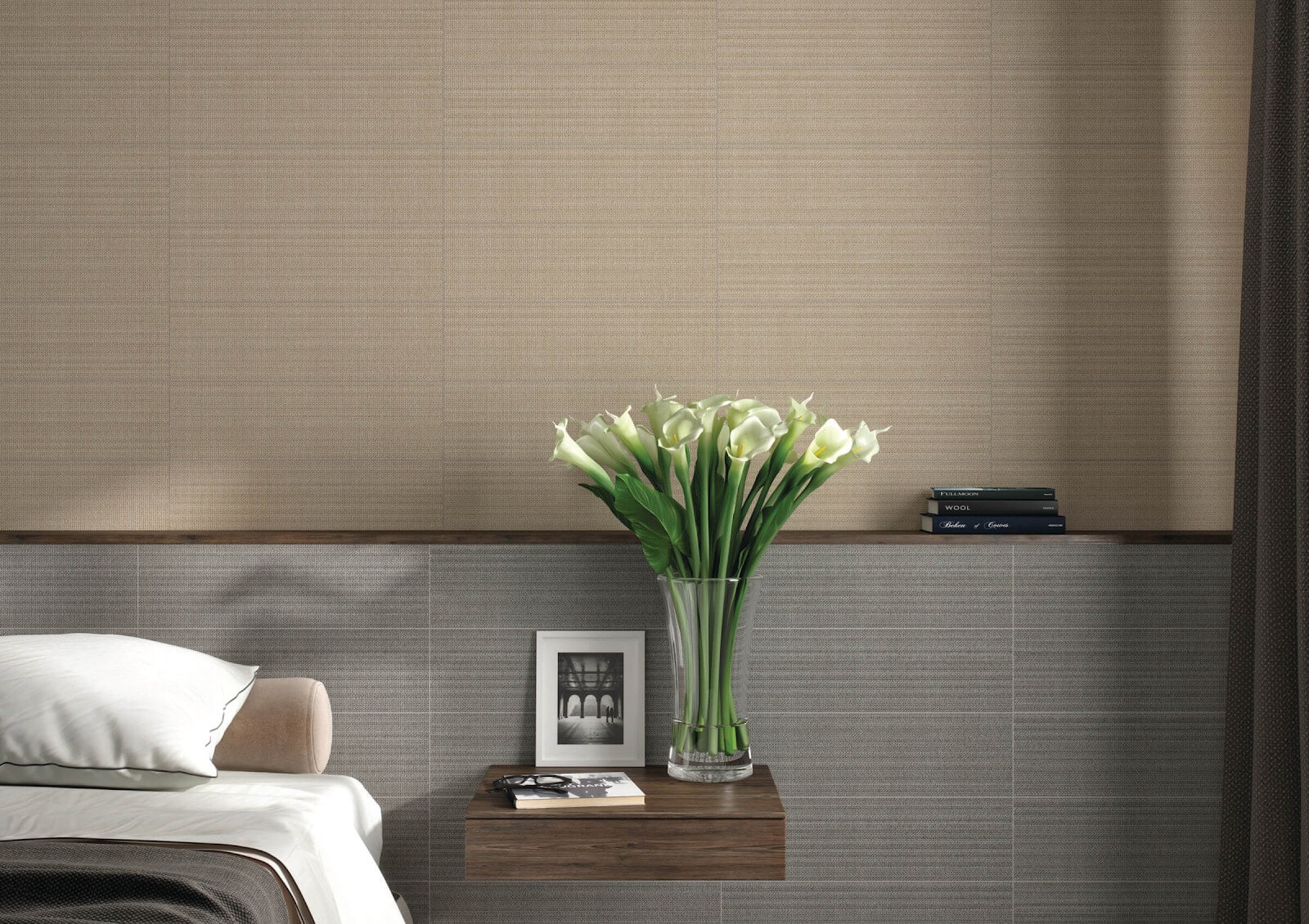
If you plan on using different tile designs in the same space, make sure that not only the tile colors but also the grout colors look good with one another. Your options include:
- Match grout color to the corresponding tile, so as to not introduce any new colors to the overall design that might not work.
- Use a single grout shade that will work for both tile styles — a mid-toned gray is a safe choice. If you can’t find a grout color that looks good with both of your tile colors, this may be a sign that your tile colors don’t work together in the first place.
- If your color scheme permits, contrast your grout colors with the other tile colors in the space. In the photo above, the gray tile has beige grout, and the beige tile has gray grout, creating subtle contrast in the design.
Grout Color Ideas
Armed with the above grout tips, you’re now ready to explore grout color.
Matching Tile and Grout


When you match your tile color with your grout color very closely, the lines between the tiles virtually disappear. This color blending is especially effective with white tile and is a great choice if you don’t want your tile to be the most prominent decor element in the room.


If you want to match your tile and grout colors but still want the individual tiles to stand out, choose three-dimensional tile or textured tile. Doing so maintains a monochromatic color scheme while allowing your tiles to pop.
[Related: Tile Trend Ideas: Textured Tile]
Contrasting Black and White
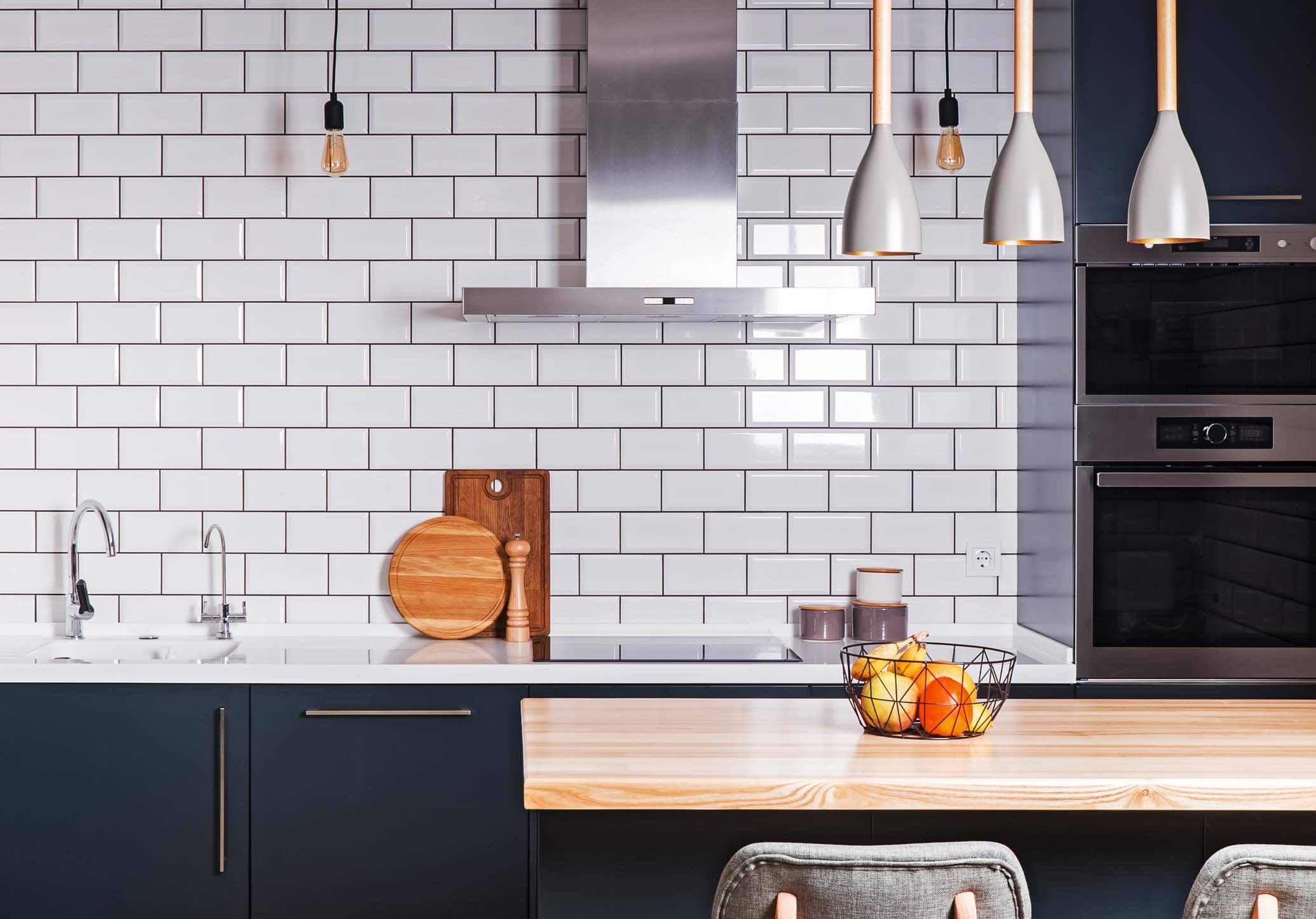

Black and white is a favorite high-contrast combination and subway tile is a perfect opportunity to employ this classic look.
While white subway tile with black grout evokes the original subway tile look, flipping this design (black tile with white grout) achieves a sleek, modern style.
Pro tip: Selection of a grout color that contrasts with the tile will emphasize the grout joint and correspondingly any variations in tile size and position. Selection of a similar or complementary grout color will de-emphasize such variations.
[Related: Black and White Designs for Every Space]
Colorful Tile With Neutral Grout
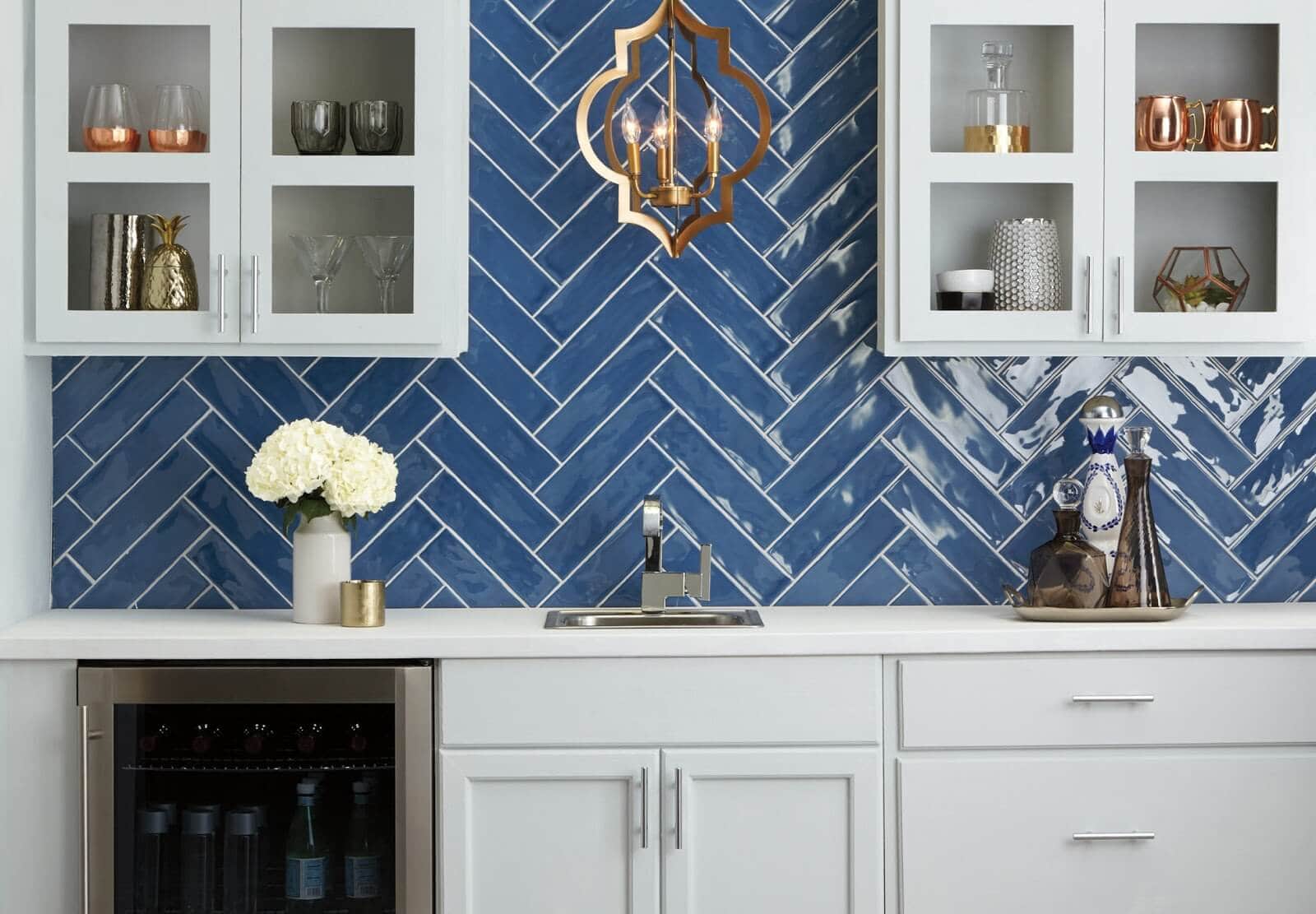
It’s important to remember that even when you use a neutral grout color, it is still a separate color from the tile color. You’re no longer dealing with stark contrasts such as black and white, so make sure that your neutral grout color strikes the right degree of contrast with your tile color or that it blends with your tile color. In general, even a “neutral” color grout will fade into the background more or highlight your tile layout pattern more.
Neutral Tile With Colorful Grout


Pairing colorful grout with neutral tile can be a one-of-a-kind look.
This option works best when you choose a grout color that matches another element in your space, such as a paint color or decor item, so that it feels like part of your color scheme and not a random selection.
Translucent Grout

When your project could benefit from the look of NO grout, translucent grout is a beautiful option that still gives you all the benefits of grout without interfering with the design.
Glitter Grout
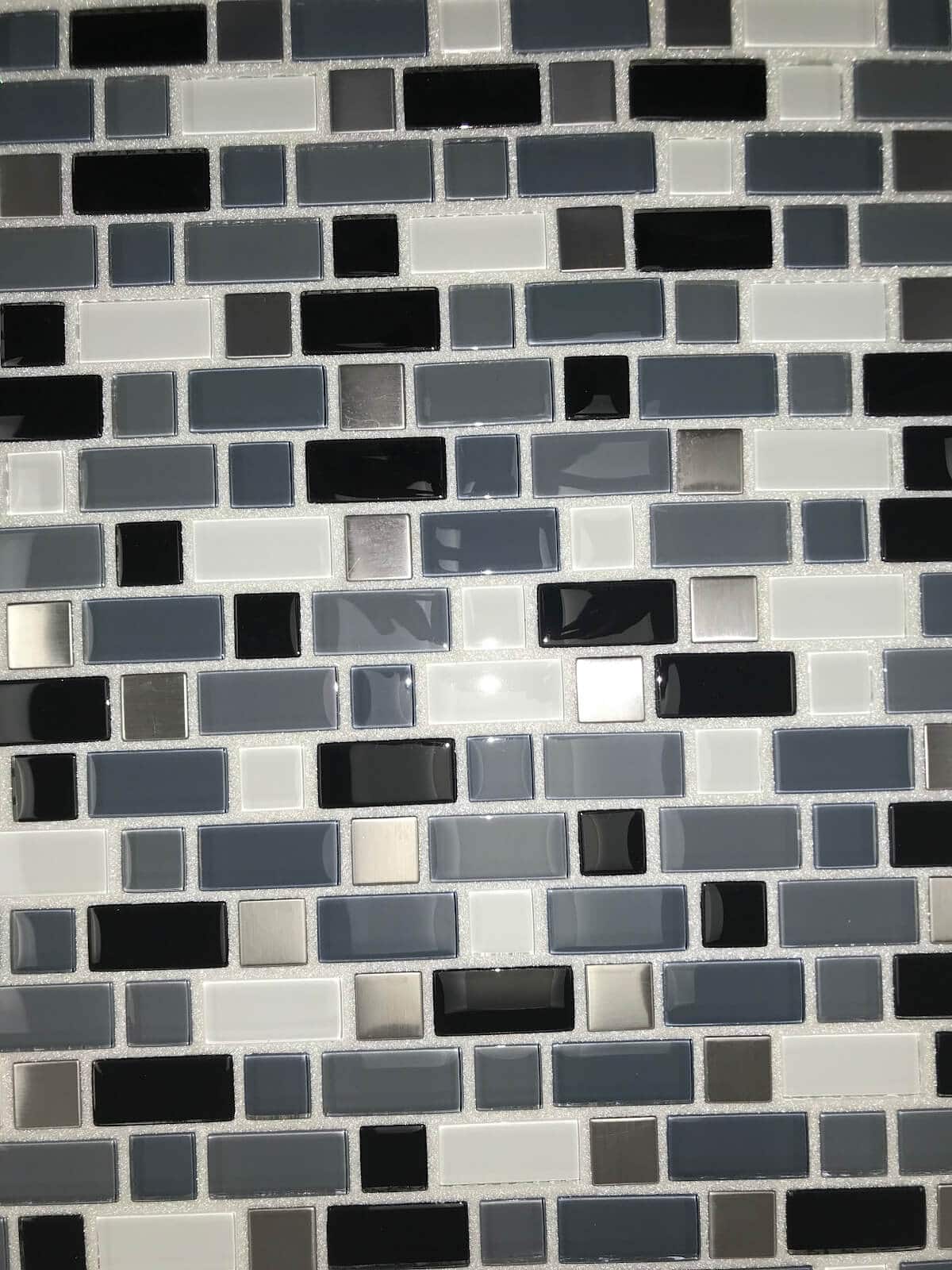
Everything looks better with a little glitter — including grout.
Glitter grout is a trending option that adds glamor to any tile application by reflecting light to create a glistening effect. A wide range of options (from traditional gold and silver to fun hues such as red, blue, and pink) ensures the perfect glitter grout color for every tile style.
Grout Color FAQs
Should my grout color match my tile color?
You can match your grout color to your tile if you want to achieve a more solid surface look. For grouts that require you to add water, the amount of water added, as well as the curing time can affect the grout’s color. How much water is used to remove excess grout can also affect the grout color with certain grout formulations.
If you do want to match your grout and tile colors, the best way to do so is to look at actual grout samples and work with your designer and/or installer to achieve the look you desire. Consider having a few spare tiles glued to a board and grouted to see best how the grout shade develops in situ.
Should my grout be lighter or darker than my tile?
Your grout can be either lighter or darker than your tile — or the same color. It depends on your preference. When deciding on your grout color, consider the color, pattern, shape, and layout of your tile and how your grout color will emphasize or detract from these elements.
How do I clean my grout?
Whatever color of grout you choose, you will want to clean it regularly — with water alone for general cleaning, and with a grout brush and a neutral pH or slightly alkaline cleaner made specifically for tile and grout for deep cleaning.
Pro tip: Darker grout is appreciated for its ability to hide dirt better than lighter-toned grout in between cleanings. This can be something to consider if you’re using your tile for flooring in a heavily trafficked area, or for an application that is exposed to food and grease, such as a kitchen backsplash.
How can I change the color of my grout?
There are a few options for changing the color of your grout: You can hire a professional to remove your existing grout and regrout and seal the area, or you can put in some elbow grease and give your grout a pick-me-up by applying a grout stain. Grout pens are also on the market but the effect is temporary. Never grout over existing grout.
Should I seal my grout?
Yes! Make sure you’re taking the right steps to keep your grout looking good long-term. Color doesn’t affect your grout’s cleanability, but sealing your grout does. Use a self-sealing grout or make sure your grout is sealed after installation to protect your grout. Sealing your grout has many benefits, including better maintaining its color and preventing stains, in addition to providing a barrier to the growth of mold and mildew.
You may choose to reseal your grout depending on the type of grout and how the area is being used and cleaned.
[Related: The Ultimate Guide to Cleaning Ceramic Tile]
What grout color should I use with subway tile?
The original subway tile used in New York City subways was white. However, modern adaptations have proven that subway tile looks great in every color. Black subway tile with white grout is a trending spin on the classic subway look, as well as colorful subway tile with white grout. Gray grout is an ideal choice for nearly any color of subway tile.
Find Your Grout Color
People talk a lot about coloring inside or outside of the lines, but when it comes to tile, coloring the lines themselves is just as important (and fun)!
Armed with our many grout color design tips, we hope you’re well on your way to finding the right grout color for your tile. For more creative grout color inspiration, visit our Grout Colors Pinterest board. For locating grout options, consult the Tile Council of North America’s product locator for different grout manufacturers.

